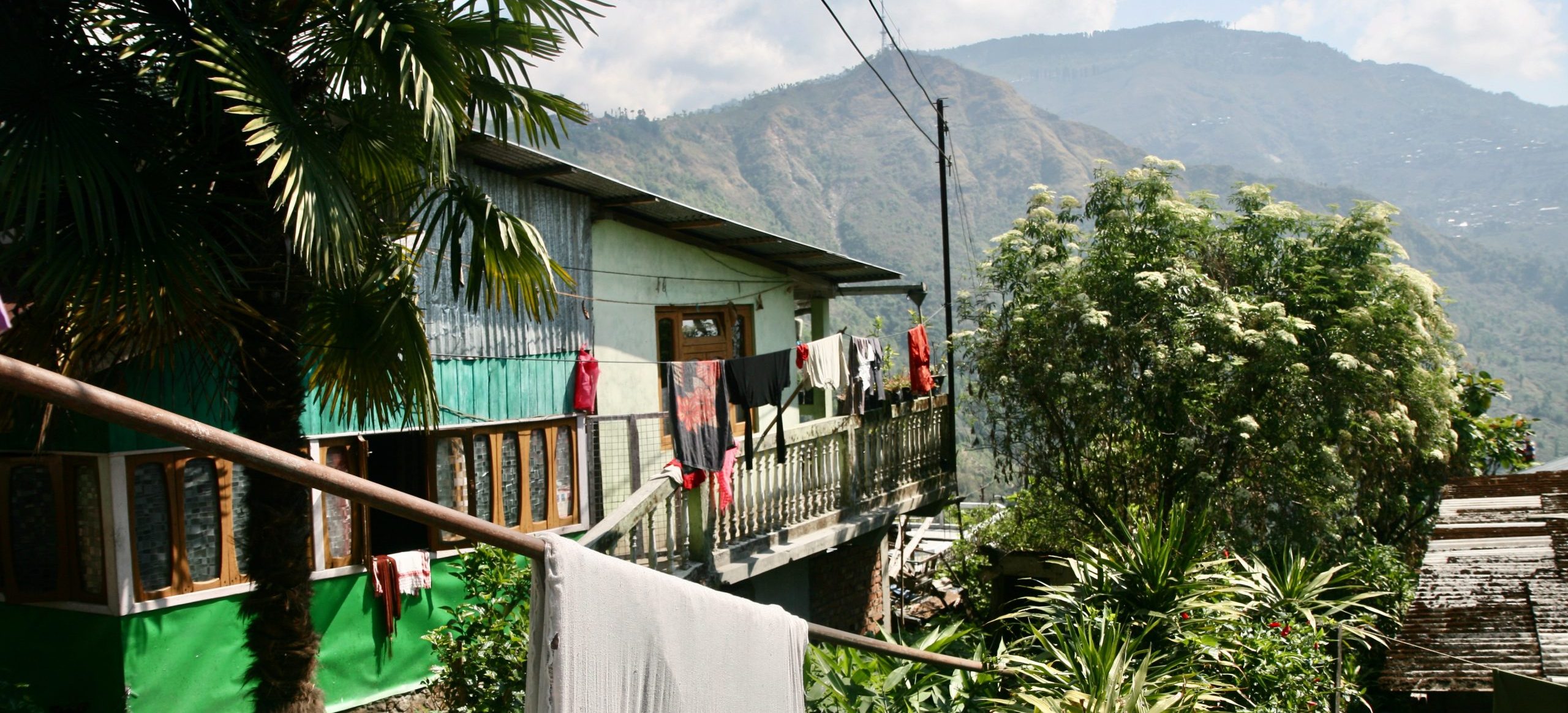SIKKIM
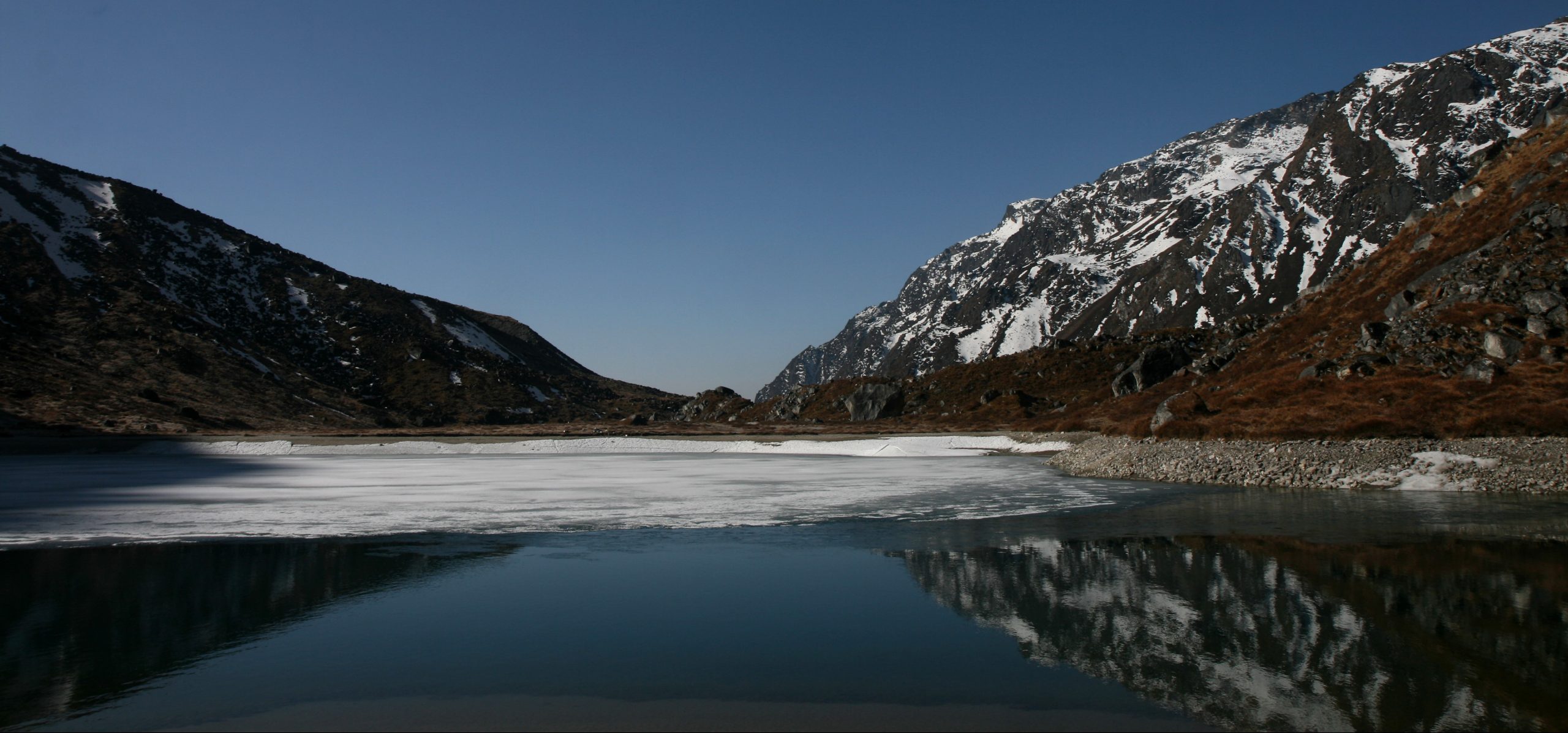
Sikkim has become our third focus destination in India. After 20 years of Ladakh in the Indian Western Himalayas, it was actually more than overdue to deal with the eastern part of the Indian Himalayas. A short visit in 1995 and an extended one in Darjeeling and Kalimpong in 2000 (incl. Singalila trekking) were the first contacts with India’s youngest state (it joined in 1975), which does not make travelling around easy. With Nepal, Tibet/China and Bhutan as direct neighbours, it lies in a politically explosive corner that is not dangerous for us travellers, but which entails rules and restrictions. For Sikkim you need an Inner Line Permit (2 weeks, easily extendable by 30 days) and for some areas (North Sikkim, East Sikkim near the Tibetan border) and for trekking tours special permits. In some cases, you are not allowed to travel alone as a Westerner.
These requirements are routinely met by the local agency. Afterwards, warm hospitality, friendly, interesting encounters, rich culture and breathtaking scenery await you.
Sikkim is a small region that is best travelled slowly. Due to unfortunately bad roads (monsoon and winter take their toll) one is already forced to a leisurely pace and automatically to physical activity. There are accommodations suitable for wheelchairs, and you can be driven to some places right to your doorstep, but basically you are better off in Sikkim if you like physical activity. With altitudes ranging from 400m to over 8,000m in a small area, Sikkim is predominantly steep. Rivers dig deep between the mountain folds. Riding a bicycle definitely requires trained muscles, many gears and a good brake. The diverse flora of Sikkim can be discovered very well on foot. However, trekking and summit climbing are somewhat limited as the small state is a border region with Tibet/China. The Sikkimese are very good on foot. A late-built and imperfect road network, which sometimes collapses in the monsoon, often forces people to walk long distances. Also, various homesteads cling high to the mountainside and cannot be reached by motorised transport.
Culturally, Sikkim is an extremely exciting state, as there is a colourful mixture of peoples and there is no such thing as “the Sikkim”. It is said that the Lepchas, who came from south-eastern areas, probably settled first. They are considered the original inhabitants of Sikkim. Shortly afterwards, the Buthia, who originated in Tibet, arrived. At the end of the 19th century, Nepalese were actively encouraged to settle in Sikkim. The population rose from 30,000 in 1891 to 600,000 in 2011, with the Lepchas and Buthias together making up only about 20% and the Nepalese the largest population group.
Sikkim was a kingdom from 1641, with some historical turbulence in which neighbouring India often played a role. In 1975, Sikkim became the 22nd state to join India and the king was deposed.
How Sikkim deals with this situation is exciting to see – which traditions are preserved, how the cultures live with each other, how they relate to the government etc.
On the road
There are several options for travelling to Sikkim. First of all, you fly to Delhi or Kolkata and can consider spending some more time there.
Delhi
From Delhi you can either fly to Bagodgra or take the train to Siliguri/New Jalpaiguri in at least 20 hours. The train journey can be interrupted wonderfully in Varanasi. For the route to/from Varanasi, you can very comfortably choose an overnight train.
Kolkata
Also from Kolkata, one can choose a flight to Bagdogra or an (overnight) train ride to Siliguri/New Jalpaiguri.
Bagdogra/Siliguri/New Jalpaiguri
From here you will be picked up by car and can then choose to go directly to your first destination or take the opportunity to ride the Toytrain. The Toytrain travels very slowly and hummily to Darjeeling. You can hop on at various stations – or later take a ride directly from Darjeeling. A trip on this classic train is definitely worthwhile!
Pakyong Airport
Sikkim has had its own airport 30 km south of Gangtok since 2018. However, it can only be approached by visual contact, which is often too poor, i.e. a large proportion of flights are cancelled. Spice Jet is the only airline that flies to this airport. In principle, we do not recommend it.
Apart from the Toytrain, the only means of motorised transport in the entire area is by car. The distances in this small state are often short, but it takes a long time because the road conditions leave a lot to be desired. The monsoon is and remains a great challenge to the road builders – not only for the pavement itself, but also due to the threat of landslides.
If they don’t have their own car, the locals usually take a shared taxi. There are 2 people in the front next to the driver, 4 on the middle seat and 4 in the back – so it’s pretty crowded. Sometimes the seats are pre-booked, sometimes they leave spontaneously. On the way, more people are picked up and invited, and seats are sometimes taken several times in a row. This is sometimes uncomfortable, but also interesting. Anyone who would like to try this out for a route can of course do so!
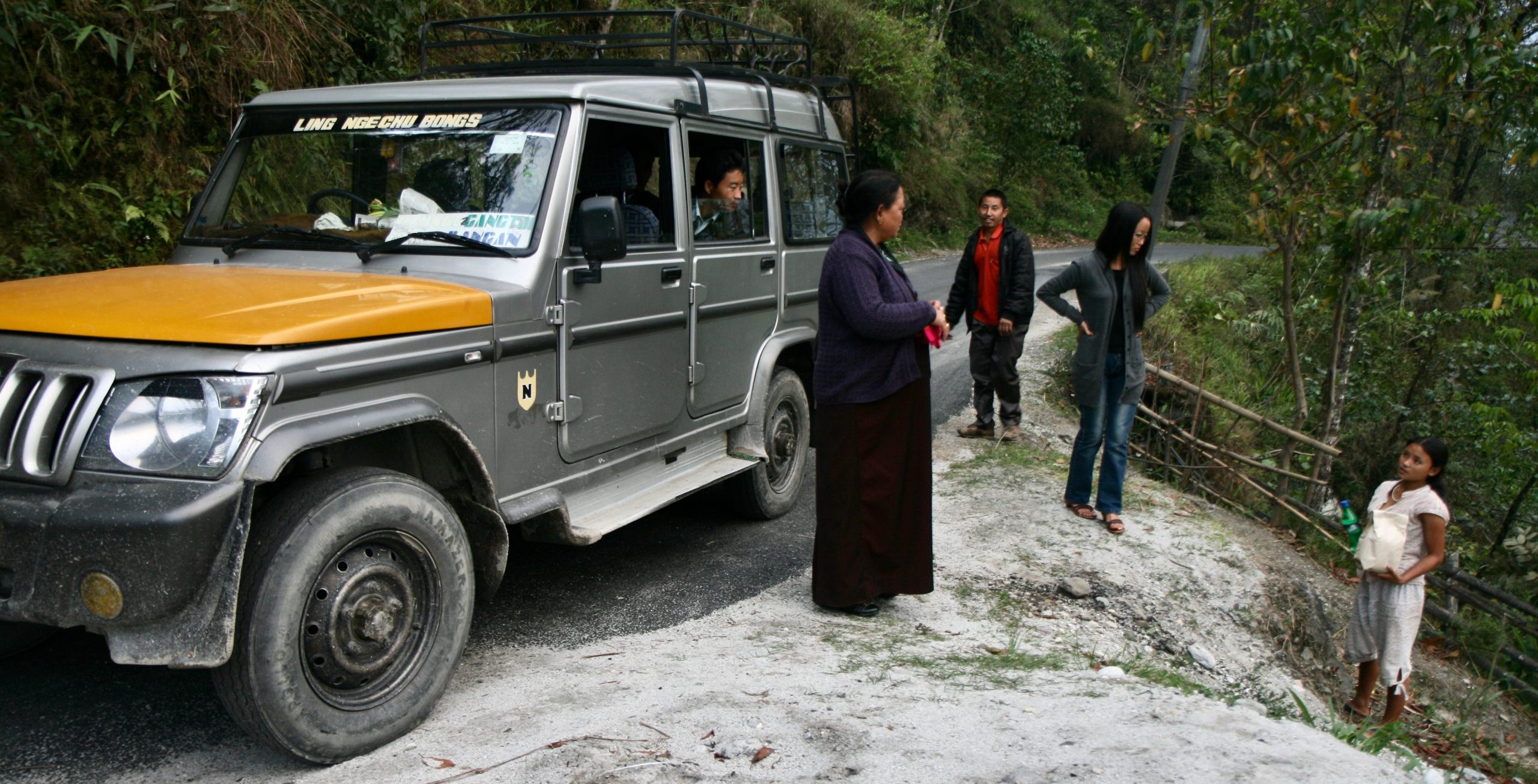
Accommodation
Sikkim has a wide range of accommodation, some of which caters for different tastes and budgets. In many hotels, emphasis is placed on Sikkimese design.
Heritage hotels, as known in Rajasthan, are unfortunately not so numerous, but at least there are some. Either established by the old royal family or built by the British, these houses hold interesting treasures from the past plus cosy furnishings.
Of the many hotels and guesthouses in the larger (tourist) towns that go up to 5-star (or there is only one each in Gangtok and Darjeeling), very many can boast the Kanchendzonga view, which one has from various rooms or even directly from the bed.
Those who like to stay close to nature but still beautiful will find a place in one of the resorts or a farmhouse. Birds chirp in the morning, the view wanders into the greenery and you can see a lot of flora and fauna directly from your accommodation.
In Sikkim, too, the homestay concept has become popular. In various villages, families have converted their traditional houses for guests and offer authentic village and family life. Some of them are quite noble and finely furnished, some more simple. What they all have in common is wonderful hospitality, lots of enthusiasm (most of them have not been around that long) and delicious local cuisine.
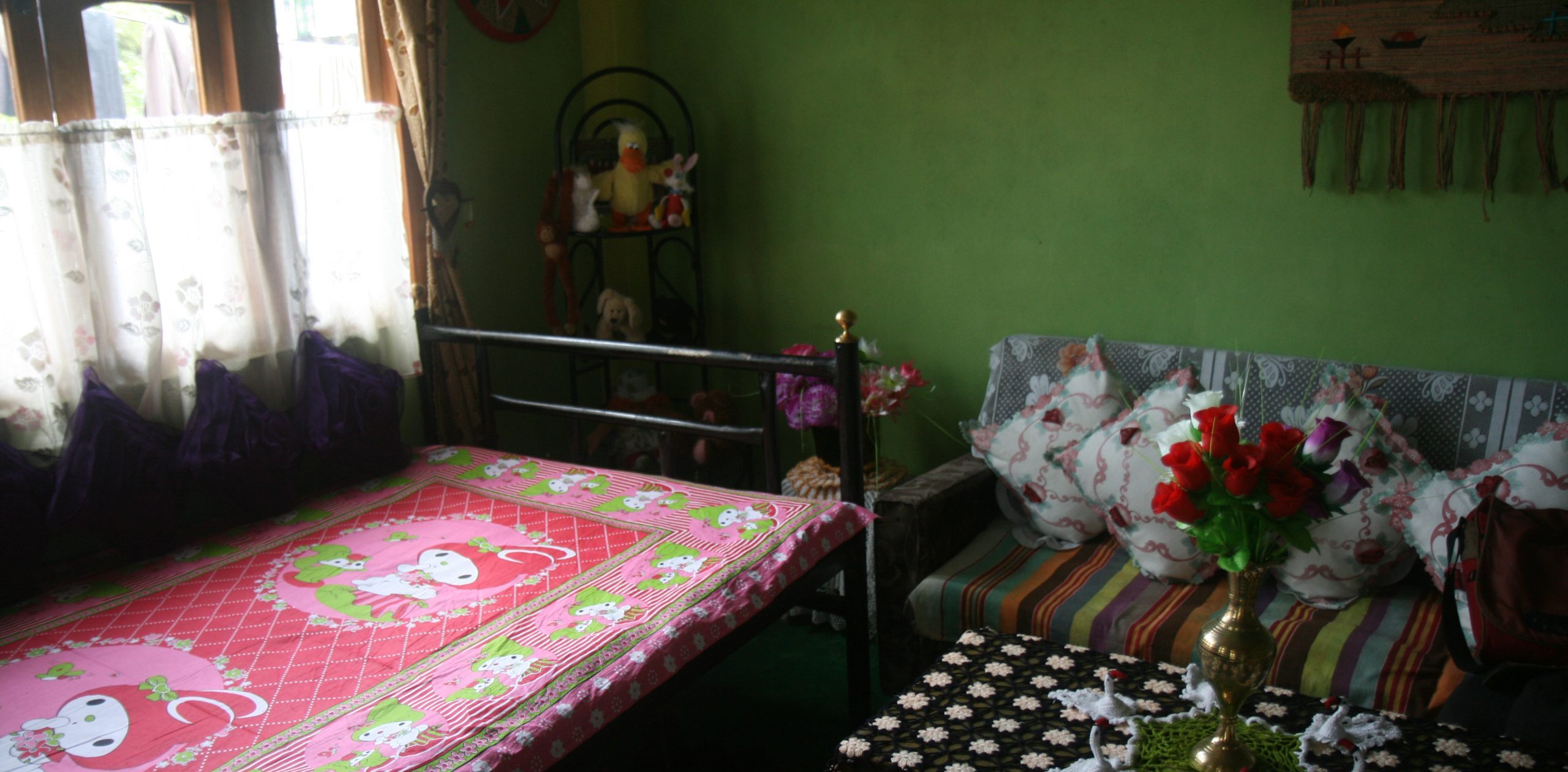
Trekking
Sikkim is a trekking paradise. The landscape is extremely diverse due to Sikkim’s altitude of between 300 and 8,586 m and the routes are not overcrowded – in many cases you are even the only party at the overnight stay. One of the reasons for the low number of trekkers may be the official requirements: a trek must be organised by an agency, there must be at least 2 trekkers and a permit must be applied for. For most treks this is uncomplicated, for a few others you can expect up to half a year in advance. However, these are no real hurdles, as the permits are automatically organised by us.
In Sikkim, treks of different lengths are possible in various areas. You can go high up or stay lower down. There are routes in populated areas and where you hardly meet anyone. Even within the treks there are variations of the route. On all of them (except Singalila trek in the Darjeeling area), you take tents with you. The luggage is carried by horses, dzos (a mixture of yak and cow) and porters.
There are also many options in Sikkim for tours of 1 hour to 1 day. You don’t have to go on a trekking tour lasting several days to experience beautiful areas on two legs. But even if you do, it is a good idea to do some hiking in many areas to better enjoy the flora and fauna, but it is also easier to meet people on foot than from a car. And some great sights can only be reached on foot, such as the Dubdi Monastery, which is 1.2 km from the road at Yuksom.
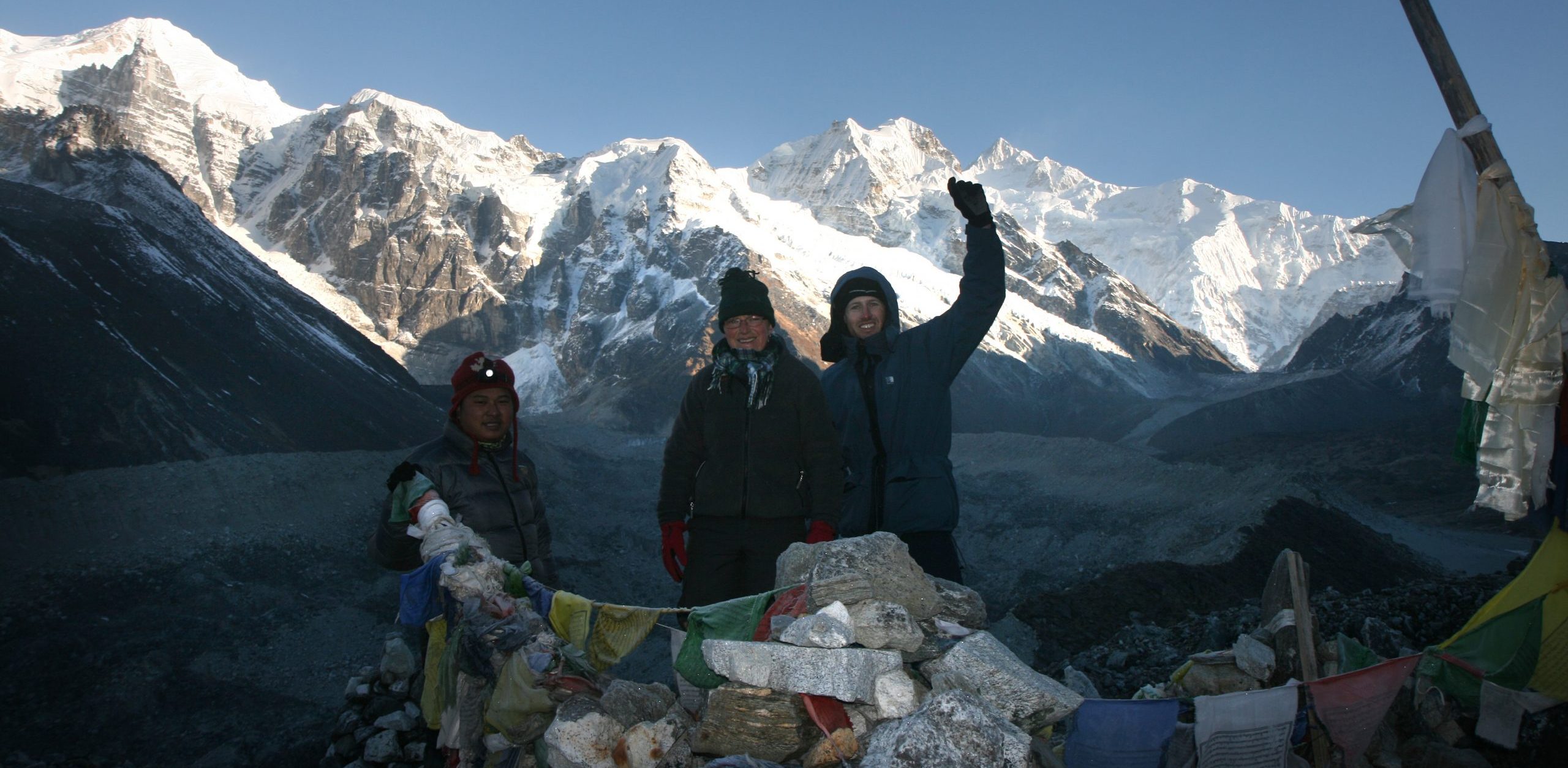
Buddhism-Hinduism-Bön-…
Most Sikkimese are Hindus. If you walk through the country, however, you get a different impression, as Buddhist prayer flags fly everywhere. There are also many more Buddhist monasteries to visit than Hindu temples.
Hinduism is practised more in private. Every house has its altar, where the deities are worshipped and prayed to. Public temples to mention include the following: Chardam Sai Mandir in Namchi, Sai Mandir in Legship and various small ones in Gangtok and other places.
What is very nice and public are festivities – the big ones like Dussehra and Diwali can be seen everywhere, Holi is a lot of fun at the M.G. Marg in Gangtok, and smaller events like Hanuman’s birthday are rather lucky to see a procession passing by.
About 35% of the Sikkimese follow Buddhism, mainly the Lepcha, the Bhutia and the exiled Tibetans. There are numerous monasteries spread across the country that invite you to visit them. Interestingly, they are almost all male monasteries; it is very rare to see a nun. There is also another peculiarity of the monks in Sikkim: many lead a “normal” life in a house with a family and work for a living – but when ceremonies are called for, they get into their monk robes and perform them. So sometimes, especially in village monasteries, it seems like they are inanimate, but there is always someone to look after them and monks who know about the teachings, who (can) perform the ceremonies and rituals.
A unique monastery is the Bon Monastery near Kewzing.
Besides the monasteries, there are now huge outdoor statues to admire, one of Padmasambhava at Samdruptse near Namchi and one of Shakyamuni at Ravangla.
Buddhists also have major festivities such as the monastery festivals (Enchey and Ravangla in early December, Phodong, Rumtek and Pemayangtse in February), Bhumchu Ritual (Tashiding in January), Phang Lhabsol (Gangtok late August/early September), Drukpa Teshi (Gangtok and Muguthang July o. August) and Buddha Purnima or also called Saga Dawa (birth, enlightenment and death of the Buddha) as well as the Tibetan New Year festival Losar. There are also ceremonies at full and new moon in various Buddhist sites.
It should not go unmentioned that Christians, Sikhs and Muslims can also be found. In Kalimpong, in particular, there is a greater mixture of religions and a stroll through the city with all the respective religious sites is an interesting thing to do.
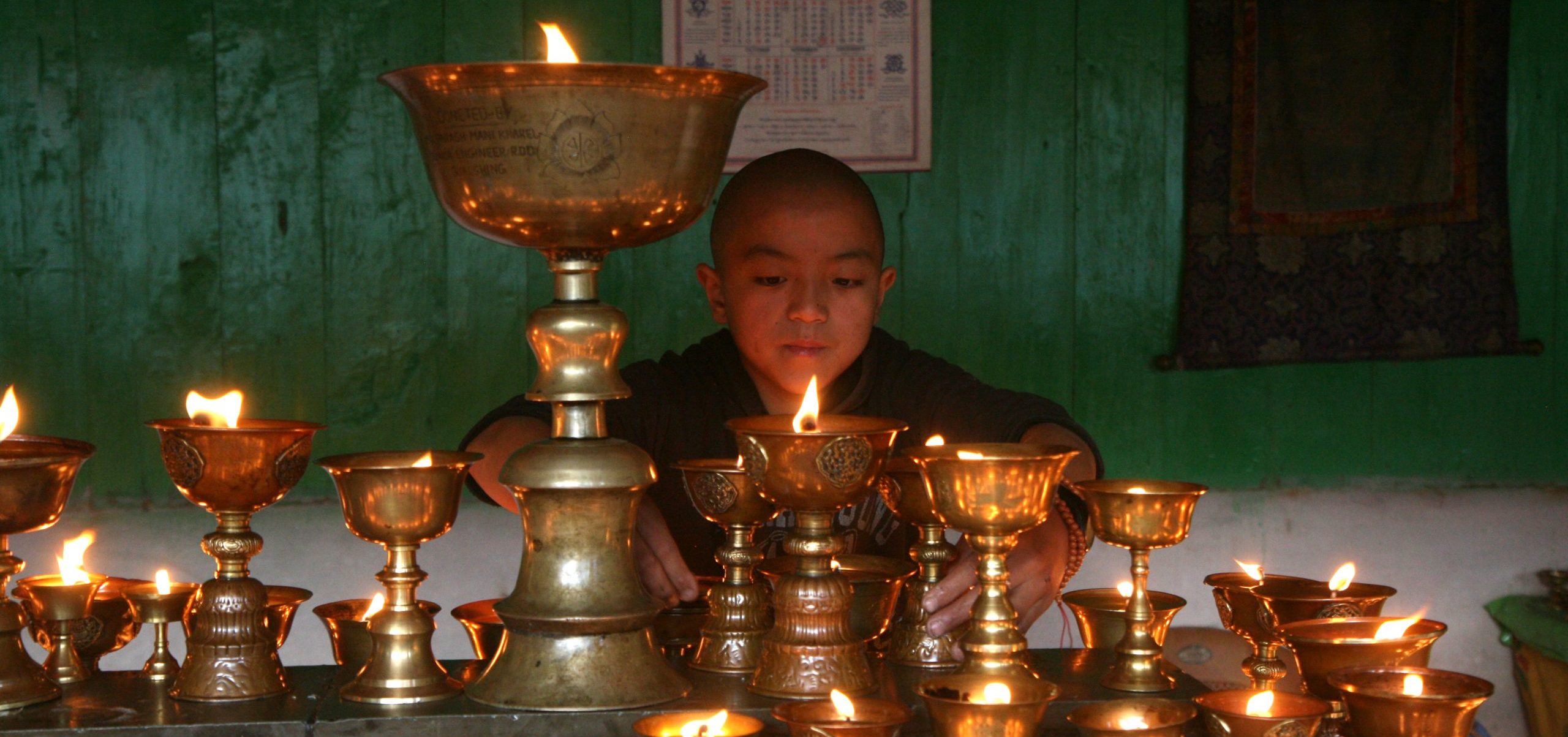
Villages
Sikkim has 8 towns and 440 villages. What could be more natural than to enjoy the atmosphere in one or more of these villages? There you can learn a lot about Sikkim and its people.
Sikkim very much promotes village tourism and we like to follow this. For years, there have been homestays in selected villages, guides and offers such as village walks, nature walks, animal observations, school visits, cultural programmes (dance and song), games, storytelling, participation in agricultural activities and, of course, enjoyment of the local cuisine.
What is special is that Sikkim switched completely to organic farming years ago. You can find out what this means for the villagers directly on site. In contact with the hosts and guides, you have the chance to have many conversations, to have connections and life stories explained to you, to exchange stories and to experience something together. These are not “big things”, but encounters and experiences that certainly contribute to a lot of understanding and become pleasant memories.
How life works in such a mixture of peoples, how old traditions are mixed with modern life, what changes have taken place in a village community, how decisions are made, what uncomplicated hospitality feels like, you can experience all that here.
And you can take it down a notch, let yourself get caught up in the quiet pace of the villagers and see what comes to you, what thoughts flow through your head, trace what life feels like for this part of the world.
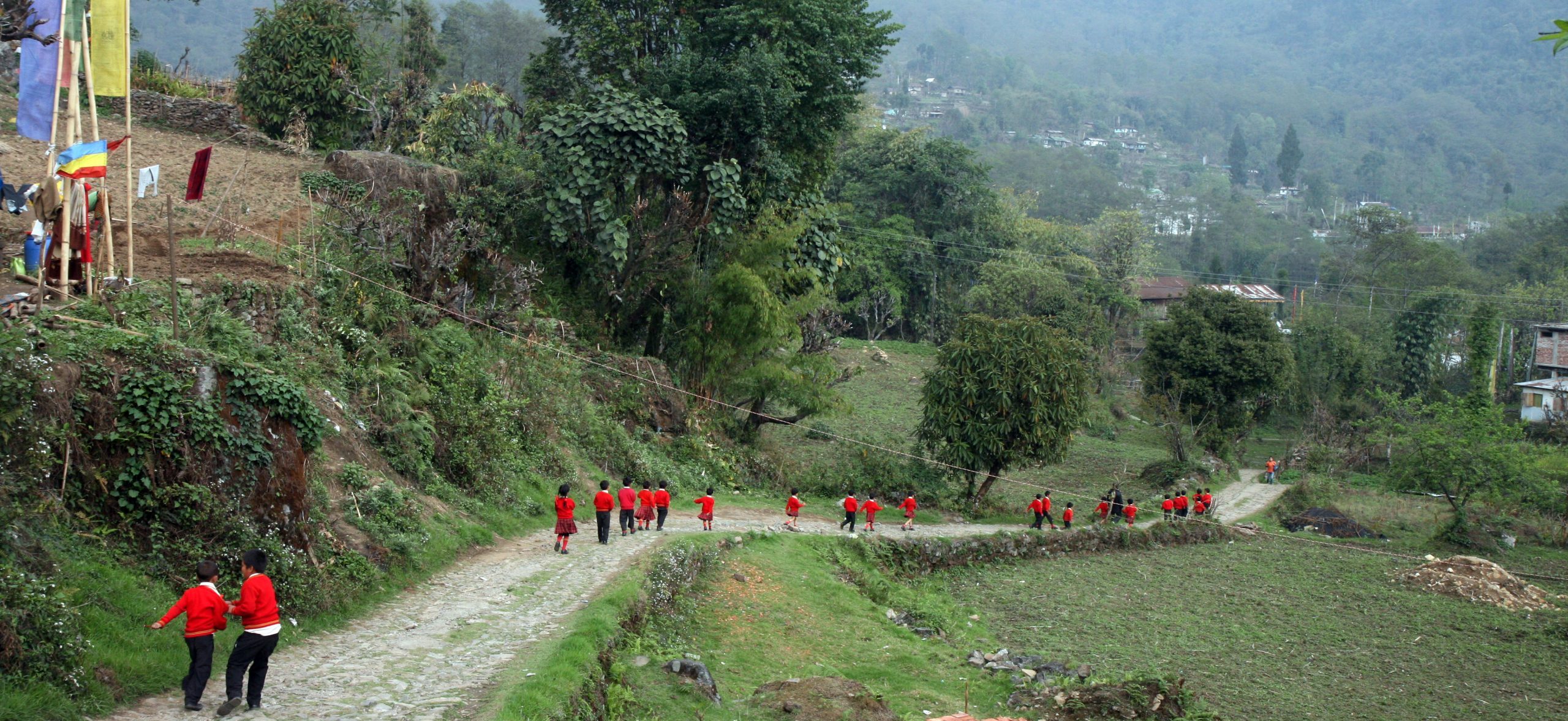
Flora und Fauna
Sikkim scores with very rich flora and fauna. It is considered one of 26 hotspots in the world for biodiversity. Many species are protected in national parks and sanctuaries. The national animal of Sikkim is the red panda, but you hardly ever see it. It is on the Red List of endangered species and usually sleeps in branch forks during the day. Snow leopards and bears also hardly ever cross the trail. On special excursions you have a better chance of spotting one of these animals. Sikkim is a special paradise for bird watching. There are 552 registered species, including many rare ones.
In terms of flora, the orchid comes first, with over 600 species – the pride of Sikkim. Many grow wild, but you can also see them concentrated at the Flower Show in Gangtok. Also interesting are the 36 species of rhododendrons, which have their flowering season in April/May. Apart from that, Sikkim offers a wide variety of plants and trees at different altitudes. Due to the altitudes of 300 – 8,586 m, the variety of species is almost endless. Besides hiking tours with special plant experts, we also offer tours for those interested in medicinal plants.
In summary, our offers are:
– Bird watching one to several days
– Plant excursion
– Medicinal plant tour
– nature walks
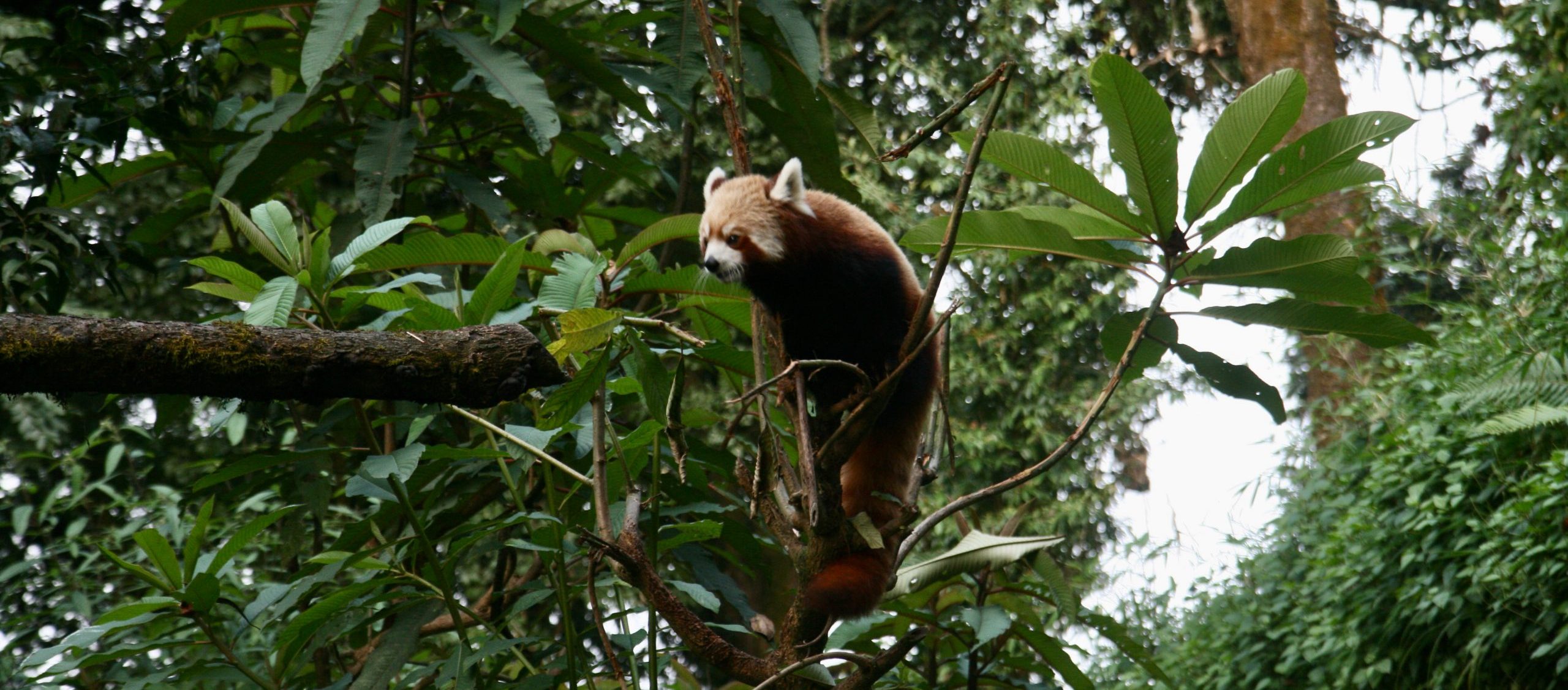
Around and nearby
While Sikkim alone offers travel experiences for a longer duration, one can of course combine one’s stay with places in the surrounding area. Between Bagdogra airport and the New Jalpaiguri/Siliguri railway station and Sikkim are the West Bengal towns of Darjeeling, Kalimpong and Kurseong, which offer many attractions.
And if you decide to travel to or from Kolkata, you should definitely plan some time for this very nice city. The night journey by train is an extra experience.
Many tour operators offer Sikkim in combination with Bhutan. We think each country is worth its own trip, but we will definitely arrange a combined tour for you!
Of course we can also combine your Sikkim trip with other areas/locations not listed here! Talk to us about your other interests – we will be happy to make travel suggestions!
